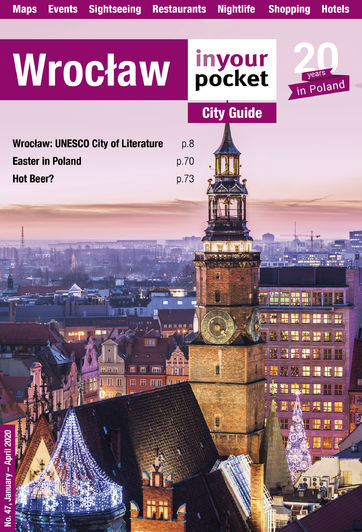Station History
One of central Wrocław’s most impressive structures is no doubt its main train station, whose flamboyant Neo-Gothic facade full of turrets and crenellations more resembles a 19th century palace than a modern transportation complex. Originally built in the years 1855–1857 to form the starting point of the Oberschlesische Eisenbahn (Upper Silesian Railway), the station was the design of Royal Prussian architect Wilhelm Grapow, and despite having only one platform it was still regarded as the biggest station in Europe. When it first opened the station stood afield from the rest of urban Breslau (as the German city was then known), flanked by a lake and a Jewish cemetery. However, as the city grew so did the need for more trains, and by 1904 five new platforms had been added. This era marked a golden age for the city, though calamity was never far away – the flood of 1903 devastated the area, with surviving postcards from the period depicting people rowing boats past the station. During WWII air raid shelters were built underneath the car park in front of the station, with the surviving catacombs later utilised by shops selling cheap clothes and pornography.Somewhat surprisingly, the station is best known for its connection to Polish cinema. It was here on Platform 3 that popular cult actor Zbigniew Cybulski (aka 'The Polish James Dean') died while trying to jump onto a moving train bound for Warsaw. Today a commemorative plaque unveiled by director Andrzej Wajda on January 8, 1997 - the 30th anniversary of the event - can be seen on the floor of the busy platform. For decades the station was also famous for its small cinema – allegedly the last train station cinema in Europe. Operating without interruption from 1947 until December 2009, the tiny Kino Dworcowe was open around-the-clock, attracting an estimated seven million viewers (among them Cybulski) during its life span. By 2002 declining audience figures led the proprietors to try projecting erotica, though even this failed to stimulate sales. A last gasp attempt to save the cinema was made in 2005, when in a sudden U-turn the owners opted for an edgy, alternative repertoire showing underground films from the Łódź Film School. The results were far from overwhelming, yet the historic site was kept running until the recent renovation of the station, which brought its streak to an end after 62 years. While the idea of reopening a cinema in Wrocław’s train station hasn’t been completely given up on, there is no current plan for such in place.
While railway station modernisation projects in Poland’s other major cities (Warsaw, Kraków, Katowice) have seemingly turned their stations into soulless shopping malls, Wrocław’s station has retained its original design, which in the exciting build-up to Euro 2012 was completely restored and enhanced to be handicap-accessible, including lifts, escalators and luggage belts leading to the platforms. The space in front of the station was transformed from a parking lot and gas station into a green public square with two fountains and plenty of benches. With space for comfortable amenities like waiting rooms, restaurants, shops and cafes, the result is nothing less than modern Poland’s most magnificent train station.




